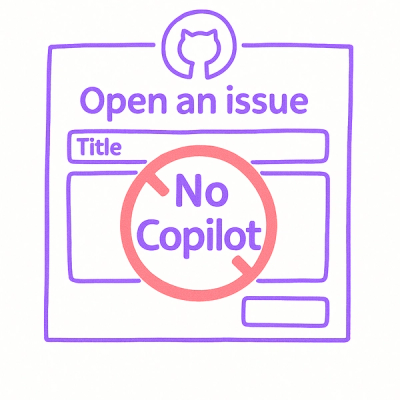tbwdjs -- TestingBotWebDriverJS
A small wrapper around camme/webdriverjs, that eases testing on (TestingBot)


Installation
$ npm install tbwdjs
Usage
The boilerplate example given by the testingbot.com node.js wizard is
reduced to
var webdriverjs = require('tbwdjs');
var client = webdriverjs.remote({
host: 'hub.testingbot.com',
desiredCapabilities: {
browserName: 'internet explorer',
version: 9,
platform: 'WINDOWS',
api_key: 'YOURKEY',
api_secret: 'YOUSECRET'
}
});
client
.init()
.url('http://google.com/')
.titleEquals('Google')
.end();
instead of the more flamboyant:
var webdriverjs = require('webdriverjs');
var assert = require('assert');
var http = require('http');
var qs = require('querystring');
var client = webdriverjs.remote({host: 'hub.testingbot.com',
desiredCapabilities:{browserName: 'internet explorer',
version: 9, platform: 'WINDOWS',
api_key: 'YOURKEY', api_secret: 'YOURSECRET'
}});
var old = client.end;
client._errors = [];
client.end = function(fn) {
old(function() {
if (fn) { fn(); }
var parts = __filename.split('/');
var name = parts[parts.length - 1].replace('.js', '');
var postData = qs.stringify({
client_key: client.desiredCapabilities['api_key'],
client_secret: client.desiredCapabilities['api_secret'],
session_id: client.sessionId,
success: client._errors.length === 0,
name: name,
kind: 10
});
var post_options = {
host: 'testingbot.com',
port: '80',
path: '/hq',
method: 'POST',
headers: {
'Content-Type': 'application/x-www-form-urlencoded',
'Content-Length': postData.length
}
};
// Set up the request
var post_req = http.request(post_options, function(res) {
res.setEncoding('utf8');
});
// post the data
post_req.write(postData);
post_req.end();
});
};
client
.init()
.url('http://google.com/')
.getTitle(function(title) { try { assert.equal(title, 'Google') } catch (e) { client._errors.push(e); } })
.end();
Additional commands
- =windowHandle()= Protocol command that returns the handle of the
current browser window.
- =titleEquals(title[, callback]})= checks if the current
windowtitle equals /title/; errors are noted and will mark the
check as failed on testingbot.com.
- =titleMatches(pattern[, callback]})= checks if the current
windowtitle matches the regular expression /pattern/; errors are
noted and will mark the check as failed on testingbot.com.
- =cssVisible(cssSelector, visible[, callback])= checks if the
element identified by /cssSelector/ is visible or not according
to the parameter /visible/; errors are noted and will mark the
check as failed on testingbot.com.
- =evaluate(code, expected[, callback])= Inject the given /code/
(javascript) into the browser. The /code/ has to =return= a
value; if this value matches /expected/, the check is
successful - otherwise it fails; errors are noted and will
mark the check as failed on testingbot.com.
- =switchWindow()= Useful if you have /target="blank"/
links/forms/buttons. Successful if it can switch to another
window, unsuccessful otherwise; errors are noted and will mark
the check as failed on testingbot.com
- =waitForVar(varname, expected, timeout, equality[, callback])=
Wait at least /timeout/ seconds for the variable /varname/ to
(not) equal to /expected/ (depending on the equality value
given). Does not affect check status.
- =waitForTextIn(cssSelector, timeout[, callback])= Wait at least
/timeout/ seconds for the element identified by /cssSelector/ to
appear and contain text. Does not affect check status.
- =waitForValueIn(cssSelector, timeout[, callback])= Wait at least
/timeout/ seconds for the element identified by /cssSelector/ to
appear and have a non empty value attribute. Does not affect
check status.
- =getVar(varname[, callback])= Inject javascript into the browser
under test to return the current value of the variable
/varname/.
- =setValues(valHash[, callback])= Pass key/value pairs as hash to
set multiple elements values in one go. Keys are css selector
statements, values the values to set. /callback/ is passed a
hash with the result for each css selector. Does not affect
check status.
- =showInfo(message)= Log an informational message formatted like
the output of the test-functions. Use it for example to log
command results: =client.showInfo(result.value);=.
testingbot.com API
Included are convenience methods to query the TestingBot API.
Please have a look at this example to access the api only:
var tbwdjs = require('tbwdjs');
var t = tbwdjs.api({ api_key: 'key', api_secret: 'secret'});
t.getBrowsers(function(browsers) { console.log(browsers); });
You can always access the api during tests with your client-object:
var webdriverjs = require('tbwdjs');
var client = webdriverjs.remote({
host: 'hub.testingbot.com',
desiredCapabilities: {
browserName: 'internet explorer',
version: 9,
platform: 'WINDOWS'
}
});
client.api.getBrowsers(function(browsers) {
console.log(browsers);
});
Authenticate with ~/.testingbot
You can omit the authentication data if you have your
~/.testingbot setup as described on ([TestingBot](http://testingbot.com)).
Contribute
Every contribution is welcome. Simply fork the repository, do your
stuff and issue a pull request.
Contributions should be make jshint and make jslint
clean. make jshint will install the npm module locally if it is
not present. make jslint depends on Google's (closure linter), gjslint must be in your path.
License
See LICENSE.




